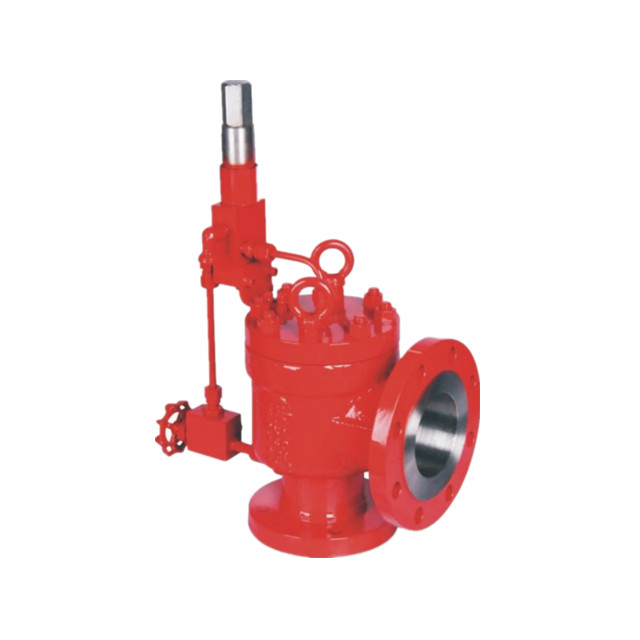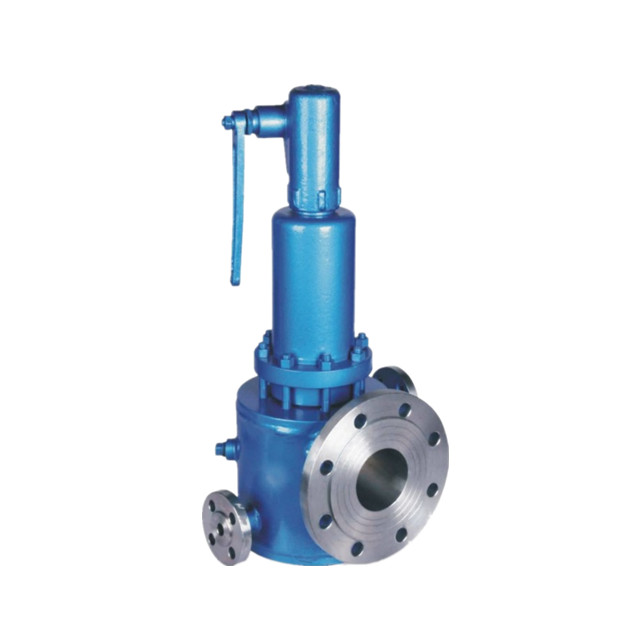Daftar isi
BeralihRelief valves and safety valves are both important for preventing system failures, but they differ in design and function. Learn about the key differences between the two in this comprehensive guide.
Ketika tekanan di dalam sistem bertekanan meningkat, tekanan di katup pelepas naik, dan katup pengaman atau katup kontrol terbuka. Meskipun keduanya berguna untuk mencegah kegagalan sistem, keduanya berbeda dalam desain dan fungsinya. Katup pelepas dirancang untuk melepaskan tekanan sebanding dengan peningkatan tekanan di atas tekanan pembukaan dan umumnya digunakan dalam sistem dengan cairan kompresibel. Apakah katup pelepas digunakan dalam suatu sistem untuk alasan keamanan atau untuk tujuan darurat tergantung pada jenis tekanan dan pengoperasian sistem.
Ketika katup pengaman melindungi peralatan dan katup pelepas mengurangi tekanan, kedua jenis ini tidak sama. Katup pengaman terbuka ketika tekanan tiga persen lebih tinggi dari tekanan yang dikehendaki, sedangkan katup pelepas terbuka ketika tekanan 10 persen lebih tinggi. Setpoint katup pengaman sering disebut sebagai tekanan kerjanya, sedangkan katup pelepas umumnya disetel 10 persen lebih tinggi.
Apa itu Relief Valve?
Relief valve terbuat dari beberapa bahan, tergantung tujuan penggunaannya. Besi tahan karat dan baja karbon digunakan untuk membuat mata air bagian dalam. Kuningan adalah pilihan yang paling hemat biaya, sedangkan plastik dan aluminium sering digunakan untuk mengurangi berat dan biaya. Katup pelepas baja tahan karat digunakan dalam aplikasi yang melibatkan cairan korosif.
Meskipun Anda mungkin tidak mengetahui banyak aplikasi dari katup pelepas, Anda mungkin pernah menjumpainya di lingkungan yang peka terhadap tekanan. Katup ini mengatur aliran gas atau cairan bertekanan untuk mencegah penumpukan yang berbahaya. Setiap kali digunakan, mereka sangat penting untuk mengatur tekanan dalam bejana tekan. Mereka juga menjaga hal-hal berjalan lancar. Penting untuk diingat bahwa katup ini sangat penting untuk mencegah kerusakan peralatan.
Types of Relief Valve
Direct Spring-Loaded Relief Valve
Direct spring-loaded relief valves are common in various industries.
They utilize a spring force to keep the valve closed, and when the system pressure exceeds the set point, the valve opens, releasing excess pressure.
These valves are known for their simplicity, reliability, and ease of maintenance.
Pilot-Operated Relief Valve
Pilot-operated relief valves use a pilot valve and a main valve to control system pressure.
The pilot valve monitors pressure and, when it exceeds the set point, opens, allowing the main valve to relieve pressure.
These valves are suitable for applications with fluctuating pressures and provide precise control.
Balanced Relief Valve
Balanced relief valves handle high pressures efficiently by incorporating a balanced bellows or similar mechanism to counteract system pressure.
This design ensures accurate pressure control and is commonly used in applications requiring consistent pressure relief.
Pressure Vacuum Relief Valve
Pressure vacuum relief valves maintain balanced pressure in a system, protecting tanks or vessels from excessive pressure or vacuum conditions.
These valves open to relieve pressure or allow air into the system, preventing vacuum conditions and ensuring container integrity.
Power-Operated Relief Valve
Power-operated relief valves use an external power source, such as an electric motor or hydraulic system, for precise and automated pressure relief.
They are suitable for applications requiring advanced control, where manual operation is impractical.
Understanding the characteristics and applications of each type is crucial for selecting the most appropriate relief valve, ensuring safety and operational efficiency.
Pros and Cons of Relief Valves
Kelebihan
Pressure Regulation
Relief valves effectively regulate pressure, ensuring safe system operation within specified limits.
Safety Assurance
They prevent overpressure scenarios, safeguarding equipment, pipelines, and vessels from potential damage.
Keserbagunaan
Relief valves come in various types, offering versatility to meet specific requirements in different applications and industries.
Ease of Maintenance
Certain types, like direct spring-loaded valves, are simple to install and maintain.
Continuous Monitoring
Pilot-operated valves provide continuous pressure monitoring, making real-time adjustments for optimal pressure levels.
Balanced Design
Balanced relief valves offer accurate and stable pressure control in high-pressure systems.
Prevents Vacuum Conditions
Pressure vacuum relief valves protect against excessive pressure and prevent vacuum conditions in containers, ensuring structural integrity.
Power Operation
Power-operated relief valves provide precise and automated control for advanced pressure management.
Kontra
Initial Cost
High-quality relief valves, especially advanced ones, may have a higher initial cost.
Maintenance Complexity
Some valves with complex designs may require intricate maintenance procedures, potentially increasing downtime.
Limited Accuracy
Achieving extremely precise pressure control can be challenging in certain situations.
Space Requirements
Power-operated valves may require additional space for power sources and control mechanisms.
Dependency on External Power
Power-operated valves depend on an external power source, limiting use during power failures or in remote locations.
Potential for Leakage
Minor leakage may occur in some relief valves, which can be a concern in specific applications.
Application Specificity
Choosing the right relief valve requires careful consideration of the application to avoid inadequate pressure relief.
Understanding both the advantages and drawbacks of relief valves is essential for making informed decisions when selecting the most suitable valve for a particular system or process.
Apa Itu Katup Pengaman?
Jika Anda sedang mencari katup pengaman baru, Anda mungkin memiliki beberapa pertanyaan di benak Anda. Pertama, apa itu katup pengaman? Dan mengapa Anda harus peduli dengan mereka? Ayo cari tahu. Katup pengaman adalah komponen penting dari semua jenis sistem gas dan cair. Mereka membantu mencegah kecelakaan dan melindungi properti Anda dari kerusakan. Artikel ini akan menjelaskan mengapa katup pengaman sangat penting. Mari kita lihat lebih dekat.
Katup pengaman dapat diklasifikasikan menjadi tiga jenis: akting langsung, akting tidak langsung, dan multi fungsi. Katup pengaman kerja langsung adalah jenis yang paling umum. Mereka umum digunakan di aplikasi bertekanan rendah dan tidak berbahaya. Katup kerja tidak langsung tidak diuji sesuai standar ASME. Mereka juga dianggap sebagai katup non-kode. Terlepas dari namanya, katup pengaman tidak bersertifikat ASME. Fungsi utama katup pengaman adalah untuk melindungi Anda dan pekerja Anda.
Jenis katup pengaman lainnya adalah katup pelepas. Ini mencegah aliran cairan yang jika tidak akan merusak pipa. Itu dipasang di pipa buntu, yang bisa merepotkan, seperti di ketel uap. Secara otomatis menutup saat dipicu, mencegah material memasuki sistem. Namun, jika timbul masalah di area yang terhubung, katup pengaman akan terbuka, mencegah aliran gas atau cairan.
Types of Safety Valves
Spring-Loaded Safety Valves
Spring-loaded safety valves are one of the most common types, featuring a spring mechanism that exerts force on the valve disc to keep it closed.
When the system pressure exceeds the set limit, the spring force is overcome, causing the valve to open and release excess pressure.
These valves are widely used for various applications, including steam boilers and pressure vessels.
Pilot-Operated Safety Valves
Pilot-operated safety valves utilize a two-step process for pressure relief.
A smaller pilot valve controls the larger main valve.
When system pressure surpasses the set limit, the pilot valve opens, causing a pressure drop that triggers the main valve to open fully.
These valves are suitable for high-pressure systems and offer precise control.
Lever Safety Valves
Lever safety valves employ a lever mechanism for pressure relief.
The lever is attached to the valve disc, and when the force exerted by the system pressure overcomes the counteracting force of the lever, the valve opens.
These valves are commonly used in low-pressure applications, and the set pressure can be adjusted by changing the position of the weight on the lever.
Diaphragm Safety Valves
Diaphragm safety valves use a flexible diaphragm to control the valve opening.
When pressure exceeds the set limit, the diaphragm flexes, allowing the valve to open and release pressure.
These valves are suitable for applications where a soft-seated valve is required to prevent damage to the seating surfaces.
Balanced Safety Valves
Balanced safety valves are designed to minimize the effect of back pressure on the valve’s performance.
They feature additional components that balance the pressure on both sides of the valve, ensuring accurate pressure relief even in situations with varying back pressure.
These valves are commonly used in processes with fluctuating pressure conditions.
Dome-Loaded Safety Valves
Dome-loaded safety valves utilize a dome-shaped chamber filled with system pressure to keep the valve closed.
When the pressure exceeds the set limit, the dome pressure is overcome, allowing the valve to open and release pressure.
These valves are known for their rapid response and are suitable for high-pressure applications.
Understanding the characteristics and applications of different safety valve types is crucial for selecting the most appropriate valve for specific industrial processes and ensuring the safety of pressure vessels and systems.
Pros and Cons of Safety Valves
Pros of Safety Valves
Reliable Pressure Relief: Safety valves provide a reliable means of relieving excess pressure in a system, preventing potential catastrophic failures due to overpressure.
Keserbagunaan: Safety valves are versatile and can be used in various applications, from steam boilers and pressure vessels to industrial processes, ensuring protection across different scenarios.
Adjustability: Many safety valves allow for the adjustment of the set pressure, providing flexibility to meet the specific pressure relief requirements of different systems.
Rapid Response: Safety valves, especially dome-loaded and spring-loaded types, can respond quickly to changes in pressure, ensuring timely relief and preventing damage to equipment.
Wide Range of Types: The diverse types of safety valves cater to different pressure ranges, applications, and environmental conditions, allowing for customized solutions based on specific needs.
Cons of Safety Valves
Maintenance Requirements: Safety valves need regular maintenance to ensure proper functioning.
Over time, deposits, corrosion, or wear can affect the valve’s performance, necessitating periodic inspections and repairs.
Limited Precision: Some safety valves may have limitations in precision when it comes to pressure settings.
Achieving extremely precise pressure relief may require more sophisticated and potentially expensive valve types.
Risk of Leakage: In certain situations, safety valves may experience leakage, especially during their initial opening or closing stages. This can lead to a gradual loss of system pressure.
Complexity in Pilot-Operated Valves: Pilot-operated safety valves, while offering precise control, can be more complex in design and installation, requiring careful setup and maintenance.
Initial Cost: Depending on the type and features, safety valves may have higher initial costs compared to simpler pressure relief devices.
However, this cost is often justified by the level of protection they provide.
Apa Perbedaan antara Relief Valve dan Safety Valve?
Ada satu perbedaan signifikan antara katup pengaman dan katup kontrol aliran bantuan. Katup kontrol aliran bantuan terbuka hanya ketika tekanan kurang dari setpoint, yang umumnya di bawah tingkat tekanan kerja sistem. Titik setel ditentukan oleh bahan dan pengoperasian sistem. Dalam kebanyakan kasus, katup pengaman akan membuka sedikit sebelum mencapai setpoint, sedangkan katup kontrol aliran bantuan hanya akan terbuka setelah tekanan lebih besar dari setpoint.
Relief valve adalah perangkat yang secara bertahap melepaskan tekanan dari suatu sistem. Ini terbuka secara proporsional dengan peningkatan tekanan dan kemudian menutup kembali. Digunakan untuk sistem yang berada di bawah tekanan untuk mencegah sistem meledak atau meledak. Katup pengatur aliran pengaman dimaksudkan untuk mencegah sistem meledak, yang merupakan situasi berbahaya. Katup pengaman bisa juga digunakan dalam proses yang melibatkan cairan, seperti mesin mobil.
Katup pengaman tekanan terbuka ketika tekanan di dalam sistem mencapai tingkat yang telah ditentukan. Ketika tekanan dalam sistem naik melebihi tekanan yang disetel, katup terbuka, dan cairan yang keluar mengurangi tekanan. Ketika tekanan berkurang, cakram akan menutup dan menutup peralatan.
About Xintai: Your Trusted Valve Manufacturer
Founded in 1998, Grup Katup XINTAI is a leading valve manufacturer seamlessly integrating R&D, casting, production, and sales.
Located in Wenzhou’s Longwan Konggang New District, the group operates from four bases with eight advanced casting lines in a 32,000 sqm workshop.
With annual production exceeding 270,000 valves, XINTAI has been a major player in Wenzhou’s casting valve industry since 1998.
ISO9001, CE, OHSAS18001, and API certifications reflect their commitment to quality.
Specializing in high-pressure systems, XINTAI offers a range of valves, from control to hydraulic, establishing itself globally with three offices and trusted custom valve solutions.












